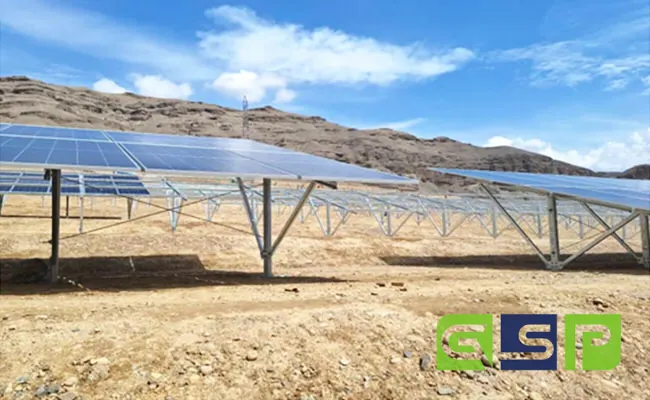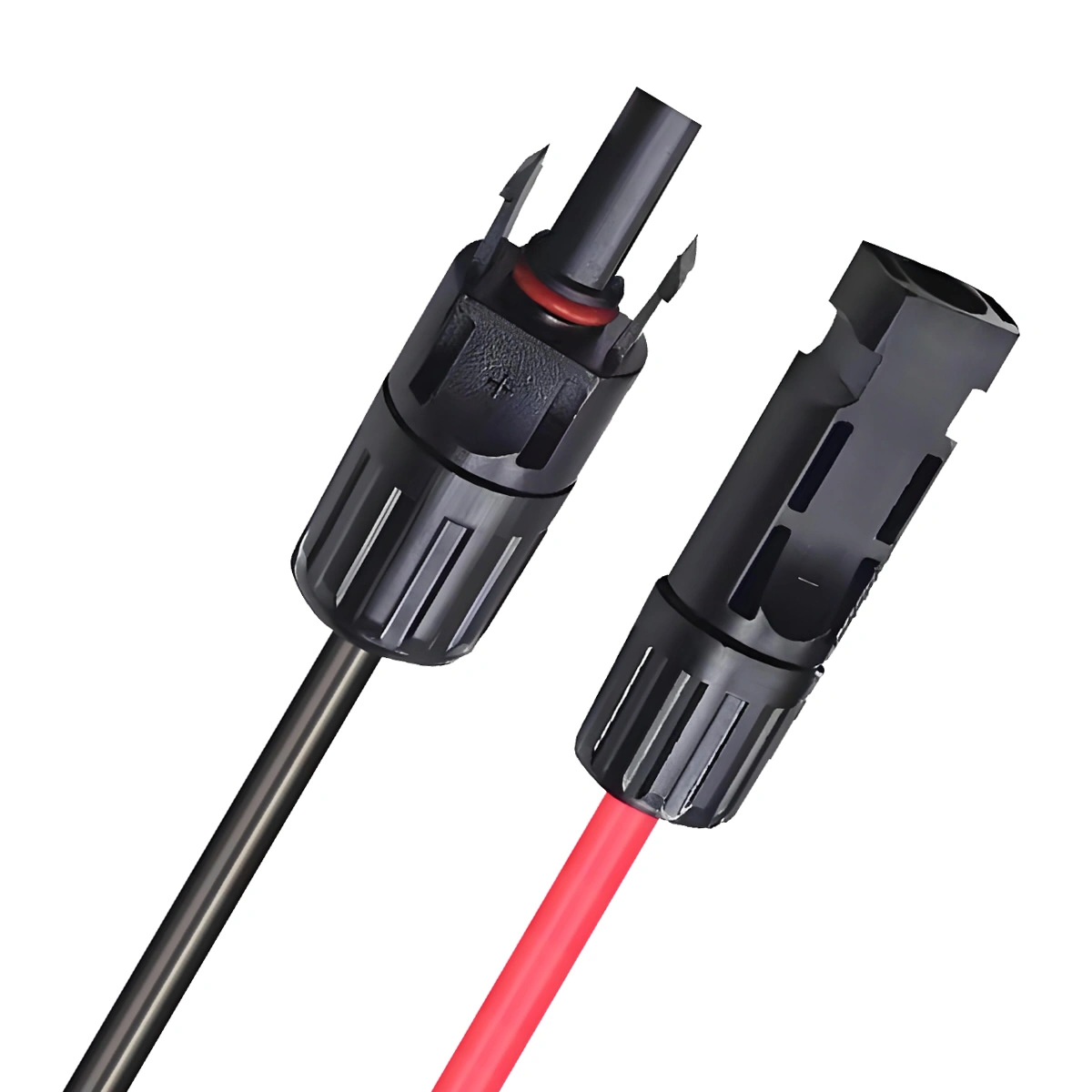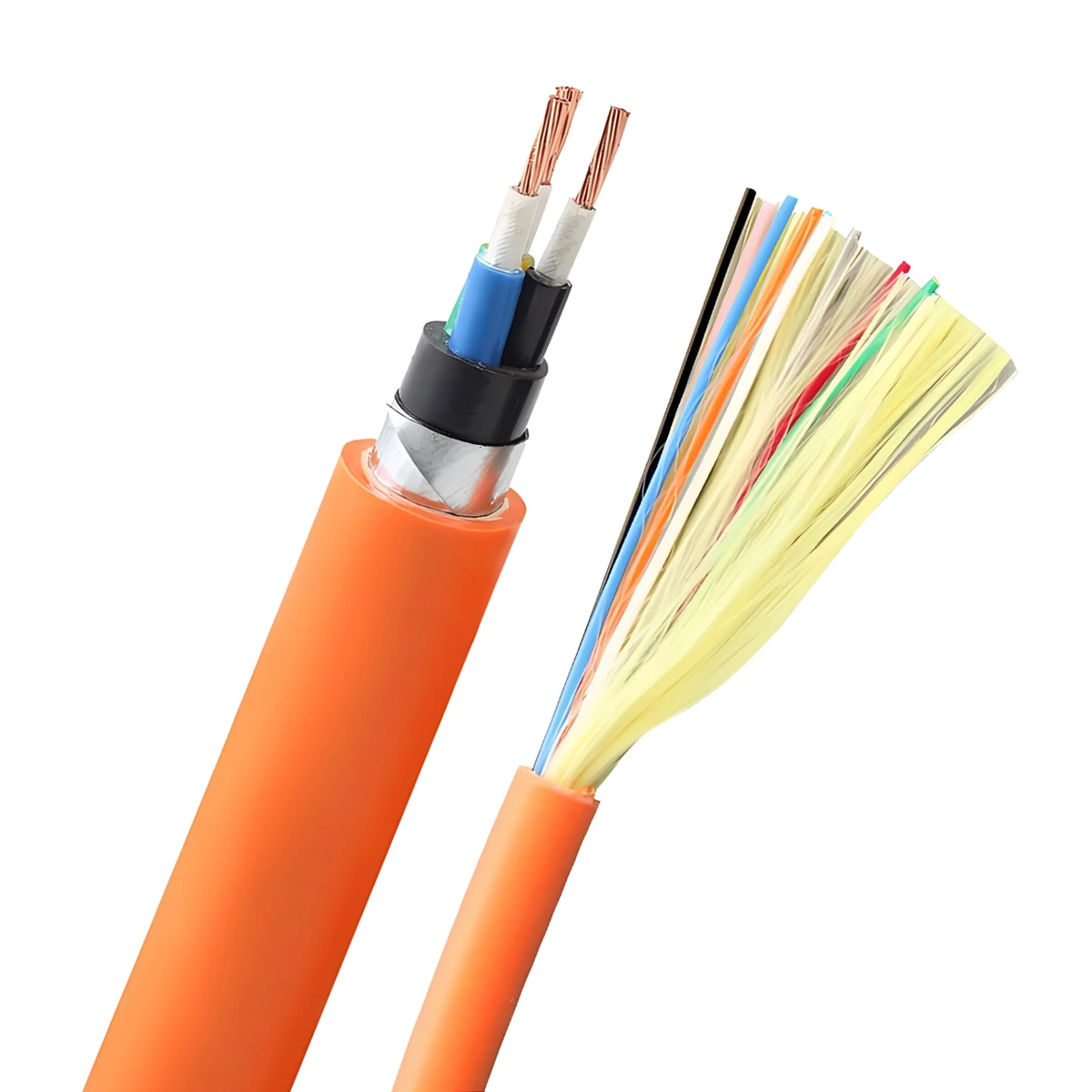Toprak Çubuğu
Güneş toprak çubuğu öncelikle güneş paneli montajlarının topraklanması için kullanılır. Fotovoltaik modüller ile toprak arasında potansiyel bir fark var, kötü ortamlarda sızıntı ve endüktif kuplaj gibi hatalara yol açabilecek. Fotovoltaik sistemin normal çalışmasını ve güvenliğini sağlamak için, güvenilir bir topraklama sistemi kurmak gereklidir.
ZMS'nin fotovoltaik sistem için topraklama çubuğu ürün yelpazesinde bakır topraklama çubuğu bulunur, bakır bağlı çelik ve galvanizli çelik.
ZMS farklı şekillerde çeşitli topraklama malzemeleri sunar, silindirik ve düz şeritler gibi. Silindirik topraklama çubukları, farklı uygulamalara uyacak şekilde çeşitli stillerde mevcuttur: bir sivri uç ve bir düz uç, bir sivri uç ve bir dişli uç, her iki ucu da dişli, vesaire.
Uygulamalar:
- Güneş paneli montajları için topraklama
- İnvertörler için topraklama
- Dağıtım kutuları için topraklama
- Sistemler için yıldırımdan korunma topraklaması
- İletişim hattı koruması için topraklama

ZMS Solar Topraklama Çubuğu Serisi
ZMS galvanizli çelik sunuyor, bakır bağlı çelik, normal PV projeleri için çıplak bakır topraklama çubukları. Ayrıca bakır-çinko alaşımlı topraklama çubukları ve paslanmaz çelik topraklama çubukları da üretebiliriz., aşındırıcı ortamların bulunduğu ortamlar için uygundur.

Galvanizli Çelik
Galvanizli çelik, belirli düzeyde korozyon direnci ve iletkenliğe sahip geleneksel bir topraklama malzemesidir. Bu malzeme en düşük başlangıç maliyetine sahip olsa da, daha kısa ömrü ve daha yüksek bakım maliyetleri, onu uzun vadede daha pahalı hale getirebilir. ZMS'nin galvanizli çelik topraklama çubukları, düşük korozyon direnci gereksinimleri olan alanlardaki kısa vadeli PV projeleri için daha uygundur.

Bakır Bağlı Çelik
Bakır bağlı çelik, çeliğin mekanik özelliklerini bakırın iletkenliği ve korozyon direnciyle birleştirir. Son yıllarda güneş enerjisi sistemlerinde en yaygın kullanılan topraklama elemanı haline gelmiştir.. ZMS'nin kullanım alanları 99.9% düşük karbonlu çelik çekirdek üzerine elektrolizle kaplanmış saf bakır, yüksek iletkenlik ile sonuçlanır, yüksek çekme mukavemeti, güçlü korozyon direnci, ve kolay kurulum. ZMS bakır bağlı topraklama çubuğu, çelik çekirdek üzerinde bir nikel katmanına sahiptir, daha sonra elektrolitik bir bakır tabaka ile kaplanır. Bu işlem, bakır katman ile çelik çekirdek arasında kalıcı bir moleküler bağ sağlar, çubuk büküldüğünde bile çatlakların önlenmesi.

Çıplak Bakır İletken
Saf bakır malzeme mükemmel iletkenlik ve korozyon direnci sunar. İletkenliği bakır bağlı çelikten daha iyidir. Saf bakır topraklama çubuklarının servis ömrü 40 yıllar ama daha yumuşak ve bükülmeye eğilimli, daha sert topraklarda sondaj yapmak için uygun olmamalarını sağlar. Maliyetinin daha yüksek olması nedeniyle, saf bakır topraklama çubukları genellikle son derece yüksek iletkenlik gerektiren durumlarda kullanılır.

Bakır Bağlı Çelik Topraklama Çubuğu Şartname
| Yapısal Biçim | Çap /mm | Uzunluk / mm | Ağırlık /kg |
| Standart | 14 | 2500 | 3.16 |
| 14 | 3000 | 3.79 | |
| 16 | 2500 | 4.00 | |
| 16 | 3000 | 4.80 | |
| 18 | 2500 | 5.00 | |
| 18 | 3000 | 6.00 | |
| 20 | 2500 | 6.25 | |
| 20 | 3000 | 7.50 | |
| 22 | 2500 | 8.00 | |
| 22 | 3000 | 9.60 | |
| 25 | 2500 | 9.80 | |
| 25 | 3000 | 11.76 | |
| Kombine | 14.2 | 1200 | 1.53 |
| 14.2 | 1500 | 1.88 | |
| 17.2 | 1200 | 2.18 | |
| 17.2 | 1500 | 2.73 |
Benzersiz Üretim Süreci: Soğuk haddeleme ve sıcak çekme üretim prosesinin kullanılması, ZMS, bakır ve çelik arasında metalurjik bir bağ sağlıyor. Bu, çubuğun herhangi bir bağlantı kesilmeden tek bir metal gibi çekilmesine olanak tanır, soyulma, veya çatlama.
Üstün Korozyon Direnci: Kompozit arayüz, yüksek sıcaklıkta kaynaklama yoluyla hiçbir kalıntı bırakmadan oluşturulur, yapıştırma yüzeyinin korozyondan arındırılmış olmasını sağlamak. Yüzeydeki kalın bakır tabaka, güçlü korozyon direnci ve uzun servis ömrü sağlar (üzerinde 30 yıllar), topraklama ağının bakım maliyetlerini azaltmak.
Gelişmiş Elektrik Performansı: Yüksek kaliteli bakırın dış katmanı mükemmel iletkenlik sunar, geleneksel malzemelerle karşılaştırıldığında çok daha düşük bir doğal dirençle sonuçlanır.

ZMS Bakır Bağlı Çelik Topraklama Çubuklarının Özellikleri
Geniş, Güvenli, ve Güvenilir Uygulama: Bu ürün çeşitli toprak nemlerinde topraklama inşaatı için uygundur., sıcaklık, pH, ve direnç koşulları.
Güvenli ve Güvenilir Bağlantılar: Özel bağlantı boruları veya termit kaynağının kullanılması sağlam ve stabil bağlantıların sağlanmasını sağlar.
Kolay ve Hızlı Kurulum: Eksiksiz aksesuarlar ve kolay kurulumla, inşaat hızı önemli ölçüde artırılabilir.
Artırılmış Topraklama Derinliği: Özel bir bağlantı yöntemi çubuğun en fazla nüfuz etmesini sağlar 35 metre yeraltı, özel uygulamalar için düşük direnç gereksinimlerini karşılar. Bir sivri ucu ve bir dişli ucu olan topraklama çubuğu, koaksiyel konnektör kullanılarak seri olarak bağlanabilir, topraklama derinliğinin esnek şekilde ayarlanmasına olanak tanır.
Düşük İnşaat Maliyetleri: Saf bakır çubuklar ve topraklama şeritleri kullanan geleneksel yöntemlerle karşılaştırıldığında, maliyet önemli ölçüde azalır.
SSS
Güneş Enerjisi Üretim Sistemleri Neden Topraklanmalıdır??
PV sistemlerde topraklama, PV kurulum personelinin en sık gözden kaçırdığı konulardan biridir, özellikle topraklama ve yıldırımdan korunmaya fazla önem verilmeyen küçük kapasiteli PV sistemlerde.
Fakat, topraklama yapılmadıysa, Topraklamaya karşı izolasyon direncinin düşük olması veya aşırı kaçak akım nedeniyle hatalar meydana gelebilir, Enerji üretimini etkileme ve potansiyel olarak kişisel güvenliği tehlikeye atma. bunlara ek olarak, korumasız veya yükseltilmiş metal parçalar yıldırım çarpmasına karşı daha hassastır. Topraklama olmadan, ekipmana yıldırım çarpabilir, PV enerji üretim sisteminde önemli hasara neden olmak.
PV sistemlerde topraklama esas olarak güneş bileşeni tarafındaki topraklamayı içerir, invertör tarafı, ve dağıtım kabini tarafı. Doğru topraklama sadece güneş enerjisi sisteminin güvenliğini arttırmakla kalmaz, aynı zamanda ömrünü de uzatır..
Fotovoltaik Sistemlerde Topraklama İçin Hangi Malzeme Kullanılmalıdır??
Galvanizli çelik daha ucuzdur, ama birçok kaynaklı bağlantısı var, daha düşük inşaat verimliliğine ve daha yüksek inşaat maliyetlerine neden olur. Saf bakır mükemmel iletkenliğe sahiptir ancak pahalıdır. Bakır bağlı çelik, Yine de, sadece maliyetler 9.4% Galvanizli çelikten daha fazlası ve çok daha uzun bir servis ömrü sunar. Öyleyse, Bakır bağlı çelik elektrik topraklama çubukları genellikle güneş enerjisi sistemlerinde birincil topraklama malzemesi olarak seçilir..
| Toprak Çubuğu Malzemesi | Galvanizli Çelik | Çıplak Bakır | Bakır Bağlı Çelik |
| Direnç Ω.mm | 1.7×10^-7 | 1.73×10^-8 | Bakır tabaka kalınlığına bağlıdır |
| Yoğunluk g/cm3 | 7.8 | 8.9 | – |
| Korozyon Direnci | 0.065 aa/yıl | Korozyon oranı eşdeğeri 1/7 galvanizli çelikten | Bakırla karşılaştırılabilir bakır tabakası yok edilmeden önce |
| Proses Özellikleri | Büyük boyutlu malzeme, yüksek kaynak gereksinimleri, karmaşık inşaat | Tek süreç, nokta kaynağından daha hızlı | Tek süreç, nokta kaynağından daha hızlı |
| Çalışma Ömrü | 7 – 13 | > 40 | > 40 |
| Maliyet | Düşük | Yüksek | Orta |
Toprak Çubuklarının Hangi Özellikleri Yaygın Olarak Kullanılır??
Bakır bağlı çelik
Fotovoltaik güç sistemlerinde, bakır bağlı çelik topraklama malzemelerinin yatay topraklama gövdesinde genellikle Φ10-Φ12 bakır bağlı yuvarlak çelik kullanılır, tipik olarak bir üretim uzunluğuna sahip 100 makara başına metre. Topraklama elektrotları Φ14 veya Φ17,2 bakır bağlı çelik çubuklar kullanır.
Bağlantı yöntemi: Termit kaynağı (harici güce veya asetilene gerek yok), Bağlantı malzemeleri için saf bakır kullanılması, kaynak noktalarında korozyon önleyici önlemlere gerek yoktur.
Galvanizli Çelik
Geleneksel topraklama ızgaralarında, Sıcak daldırma galvanizli çelikten imal edilen yatay topraklama gövdeleri genel olarak 50X5 veya 60X6 galvanizli yassı çelik özelliklerinde tasarlanmaktadır., üretim uzunluğuna sahip 6 parça başına metre. Dikey topraklama elektrotları 50X5 sıcak daldırma galvanizli köşebent çelik veya Φ50 galvanizli çelik borular kullanır, topraklama elektrodu uzunluğuna sahip 2.5 parça başına metre.
Bağlantı yöntemi: Elektrikli kaynak, korozyon önleyici işlem gerektiren kaynak noktaları ile, iki kat pas önleyici boya ve bir kat asfalt boyası gibi.
Çıplak Bakır
Saf bakır topraklama malzemeleri için, yatay topraklama gövdesi genellikle 25 kullanır×4, 40×4, 50×5, veya 60×6 mm bakır şeritler, veya S70/S95/S120/S150/S185/S240 mm çıplak bakır teller. Dikey topraklama gövdesi tipik olarak 16 adet kullanır.×2500 mm veya 20×2500 mm bakır çubuklar, veya 50×3000 mm veya 55×2500 mm saf bakır elektrolitik iyon topraklama elektrotları.
Bağlantı yöntemi: Termit kaynağı, ateş çamuru eritme kaynağı, veya sıcakta eriyen kaynak.
Fotovoltaik Sistemlerde Topraklama Çubukları Nasıl Takılmalıdır??
İnşaat sırasında, topraklama çubuğunun takılması çok esnektir ve sahadaki özel koşullara uyarlanabilir. Çeşitli yöntemler kullanılabilir, elektrikli topraklama çubuklarının ağır çekiçler veya elektrikli çekiçlerle doğrudan toprağa çakılması gibi. Çubuğun çakılamadığı karmaşık toprak koşullarında, topraklama çubuğunu takmadan önce ilk önce bir delik açılabilir.
Üniform toprak koşullarında, Tek bir çubuğun montajı ve çakılması için ağır bir çekiç kullanılıyorsa, bir matkap ucu takılması tavsiye edilir (darbeye dayanıklı cıvata) Çubuk derine sürüldüğünde bakır tabakanın zarar görmesini önlemek için çubuğun sivri ucunda. Daha derin topraklama için, İstenilen uzunluğa ulaşmak için konektörler kullanılarak birden fazla çubuk bağlanabilir, iyi elektrik bağlantısının sağlanması.
Derin delmenin zor veya imkansız olduğu durumlarda, kayalara nüfuz etmek için sondaj aletleri kullanılabilir. Sondajdan sonra, Toprak çubuklarını takmanın iki yöntemi vardır:
1. Konektörleri kullanarak çubukları istenen uzunluğa bağlayın. İstenilen derinliğe kadar delindikten sonra, deliği direnç azaltıcı bir maddeyle doldurun ve delik dolana kadar su ekleyin.
2. Konektörleri kullanarak çubukları istenen uzunluğa bağlayın. İstenilen derinliğe kadar deldikten sonra, Direnç azaltıcı maddeyi suyla karıştırın ve çubuğu tamamen saracak şekilde deliğe dökün.
Güneş Enerjisi Sistemlerinde Hangi Topraklama Gereklidir?
Bileşen Tarafı Topraklama:
- Modül Çerçevesi Topraklaması: Modülün montaj parçasına temas eden alüminyum çerçevesi etkili topraklama anlamına gelmez. Etkili topraklama için modülün topraklama deliğinin montaj parçasına bağlanması gerekir. Modüllerin topraklama delikleri genellikle dizi bağlantıları için kullanılır, her iki uçtaki topraklama delikleri metal montaj parçasına bağlı.
- Topraklama Montajı: Genellikle, yuvarlak çelik, galvanizli çelik çubuklar, Topraklama için bakır bağlı çelik çubuklar kullanılır, topraklama direncinin 4Ω'dan büyük olmaması gerekir.
İnverter Tarafında Topraklama:
- Operasyonel Topraklama: İnverterin PE terminali dağıtım kutusundaki PE barasına bağlanır, dağıtım kutusu aracılığıyla topraklanan.
- Koruyucu Topraklama: İnverter şasisinin topraklama deliği, invertörü ve operatörlerin güvenliğini korumak amacıyla tekrarlanan topraklama için kullanılır. İnverter şasisinin koruyucu topraklaması ayrı bir topraklama elektrodu kullanabilir veya bir tanesini dağıtım kutusuyla paylaşabilir.
Dağıtım Kutusu Tarafında Topraklama:
- Yıldırımdan Korunma Topraklaması: AC tarafı yıldırımdan korunma, sigortalardan veya devre kesicilerden ve aşırı gerilim koruma cihazlarından oluşur (SPD). SPD'nin alt ucu dağıtım kutusunun topraklama barasına bağlanır.
- Kutu Topraklaması: Düzenlemelere göre, dağıtım kutusunun metal çerçevesi ve taban çeliği topraklanmalı veya nötre bağlanmalıdır. Güvenilir topraklama sağlamak için kabin kapısı ve kabin gövdesinin çapraz bağlantıya ihtiyacı vardır.

Proje Vurgusu
ZMS güçlerini birleştirdi Yeşil Devlet Gücü (GSP), yenilenebilir enerji altyapısında öncü, anıtsal bir donatmak 10 Kabil'deki MWP fotovoltaik projesi, Afganistan.
ZMS, PV projesini kapsamlı bir şekilde analiz etti ve 1X10 ve 1X6 solar kablolar H1Z2Z2-K, 3X300 AG kabloları, 3X300 OG kabloları, ACSR'nin yanı sıra 185/30 havai kablolar. Bunları tamamlayanlar arasında PV konektörleri ve titizlikle seçilmiş alet kutuları gibi hayati aksesuarlar vardı..
ZMS'nin kalite ve güvenilirliğe olan bağlılığı, sorunsuz kurulumu ve operasyonel verimliliği kolaylaştırdı, Bölgenin sürdürülebilir enerji altyapısına katkıda bulunmak.
ZMS Hizmeti
Özel Üretim
We understand that every customer's needs are unique. Öyleyse, kişiselleştirilmiş güneş enerjisi kablosu özelleştirme hizmetleri sunuyoruz, kablo özelliklerinden bağlantı arayüzlerine kadar her ayrıntıyı özel proje gereksinimlerinize göre uyarlamak, maksimum uyumluluk ve verimlilik sağlamak.
Küresel Hızlı Yanıt Lojistiği
Küresel lojistik ağımızın desteğiyle, ZMS, fotovoltaik kablo siparişlerinizin dünyanın her noktasına güvenli ve hızlı bir şekilde ulaşmasını sağlar. Profesyonel lojistik ekibimiz, mallarınızın zamanında teslim edilmesini sağlamak için taşımacılığın her aşamasını izler.
Teknik Destek
ZMS's technical support team is always on standby. Karşılaştığınız teknik zorluklar ne olursa olsun, hızlı yanıtlar ve profesyonel çözümler sağlayabiliriz, endişesiz bir kullanıcı deneyimi sağlamak.
Yeşil Üretim
Solar kablolarımız ve aksesuarlarımız üretim sürecinde çevre standartlarına sıkı sıkıya bağlı kalıyor, çevreye etkilerini en aza indirmek. ZMS'yi seçerek, yalnızca yüksek kaliteli fotovoltaik kablolara yatırım yapmakla kalmıyor, aynı zamanda gezegenin sürdürülebilir kalkınmasına da katkıda bulunuyorsunuz.








